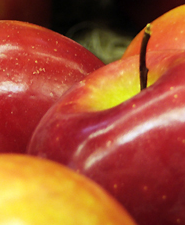|
|
| All About Corkage
Frequently Asked Questions about Corkage
by Jack Everitt
You can bring your own wine to lunch or dinner, when dining in
most restaurants in California, something which many people don't realize.
The restaurant will charge you a "corkage fee" ranging from $5
to $25 per bottle (or more at very high end places).
Some restaurants discourage you from bringing your own wine by charging
a high corkage fee. Some restaurants waive a corkage fee if a bottle
is also purchased from the restaurant's wine list. (For instance you order
a white wine from the restaurant list and bring a red with you.) Occasionally
you will find a restaurant with no corkage fee at all – or sometimes
restaurants offer a no-corkage night. In general, $10-$20 is a normal corkage
fee, per bottle.
Why do restaurants charge Corkage fees?
Corkage
fees cover wine service, wine glass breakage/rental and some of the lost
revenue not selling a wine off the restaurant's list. For example,
if a bottle of wine wholesales for $15 and the restaurant charges $35,
there is usually a $15 corkage fee.
Three general rules apply:
Before you bring a wine to restaurant make sure that they offer a corkage
fee. Be prepared to order off the restaurant's list if you don't ask
first and they don’t offer corkage.
- Never bring a wine already on the restaurant's wine list (and
in general they won’t let you open it if you do). Many restaurants
offer a copy of their wine list online
- Don’t bring a cheap/grocery
store wine. The idea is to bringing a special wine.
- Tip as if you
purchased the wine at the restaurant (so you have to make a guess,
but!), adjusting for corkage cost.
- My own, fourth rule would be:
Do not bring wine to a restaurant with a very good wine list unless
it's a very special wine. It’s important to reward the restaurants
that make the effort to have a strong wine list, especially those which
price
them fairly.
What if you don’t know what’s
on the wine list?
Generally then you only bring a very special or unusual bottle which is
not likely to be on the list. (But sometimes you’ll guess wrong.)
You can also bring a back-up bottle. Just don’t walk in with a
case of assorted wine.
What to do if the wine you brought is somehow on the list
It happens. If the error is discovered after the bottle you brought is
opened then simply apologize to the sommelier. But don’t *ever*
bring a bottle that you *know* is on the list.
What to do if the bottle is not opened yet and you
discover it’s
on the list – and were intending to have only one bottle?
If the
bottle is not yet opened order it or another bottle from the list instead
of opening the one you brought.
Table Etiquette
It is a good idea to place the bottle on the table so that when the waiter
arrives he or she is immediately aware that wine has been brought. After
the bottle brought is presented, usually the waiter will inquire if the
wine should be opened right away, if an ice bucket is needed or if the
wine needs to be decanted. If the service required is not offered, be
prepared to ask, just as you would if you were ordering the wine off
the list at the restaurant. You should receive good stemware and the
same services that you would as if you had ordered the bottle from the
restaurant’s wine list.
White or Red? Cab or Pinot?
If you are not sure about what you are going to be ordering in the restaurant… it’s
fine to bring 2 bottles to choose from after perusing the menu you can
choose one.
One hint on what to bring:
A white wine with some acids (i.e., low oak or unoaked). This is the category
of wine that’s weakest on wine lists in Northern California because
local wines don’t excel in this category (due to the very warm
climate).
What is a "Special Wine"?
While there are no definitive parameters, a special wine could be an older
wine not easily available, a bottle purchased under special circumstances
or received as a gift, or an unusual wine.
Corkage & Large Groups
If your group is large and multiple bottles will be brought to the restaurant,
it’s best to call beforehand. Enquire as to whether the restaurant
is amenable to a large group with many bottles and if they would consider
a reduced corkage fee. You should have all of the issues of glasses per
person, and number of bottles and total corkage fees, resolved before
entering the restaurant. Often with large groups – as in an off-line
for example, guests will supply their own glassware as well as bring
wine – which may help in getting the corkage reduced. Be prepared
that some restaurants will not reduce the corkage or will not be able
to supply sufficient glassware for a large group.
Jack Everitt and his wife, Joanne, run ForkandBottle.com -
Jack and Joanne's Guide to Eating, Drinking & Living. ForkandBottle.com is
a terrific food and wine resource that encompasses food, cooking, wine, restaurants
and everything epicurean.
|
|















